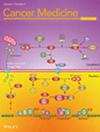Because Doing “It” Matters to Patients: Development and Evaluation of a What Matters to Me Tool That Elicits Patients' Priorities to Support Cancer Treatment Shared Decision-Making
Abstract
Introduction
Cancer impinges on nearly every aspect of the lives of patients, survivors, and loved ones. This study presents progress in developing the “What Matters to Me” Worksheet (WMTM-Worksheet), designed to elicit personal priorities across multiple life domains. WMTM-Worksheet items were finalized based on clinician recommendations and patient feedback. Individuals at any point in cancer treatment were interviewed post-appointment about using the WMTM-Worksheet prior to their appointment.
Methods
To finalize the WMTM Worksheet, initial samples of clinicians and patients were interviewed on its content and usability. Oncology clinicians were recruited by email; 25 accepted and were surveyed about current practices of incorporating patient priorities and preferences into treatment planning, and the usability, practicality, and feasibility of the 17-item WMTM Worksheet. Patients were English- or Spanish-speaking adults diagnosed with gynecological, head and neck, or urological cancers. Patients at any point in active treatment or follow-up were eligible. An initial sample of 15 patients was administered a cognitive interview about the WMTM Worksheet by telephone to assess its clarity, relevance, and feasibility. Next, 61 patients taking part in the user experience portion of this study were identified through the electronic medical record (EMR), contacted by telephone, and offered participation in a onetime interview regarding the WMTM Worksheet. They received the WMTM Worksheet prior to a clinic appointment. Questions regarding user experience were administered by telephone 1–3 days later.
Results
Of the 61 patient respondents, 57% were over age 65, 59% female, 41% Hispanic, 45% Black; 49% had an annual income below $35,000. Patient responses yielded seven principal components, reflecting domains such as symptoms, family caregiving, work, and hobbies. Most patients (62%) said the WMTM-Worksheet helped them think about disease and treatment; 30% said it helped communication with clinicians. Eighty-five percent were glad to share their concerns, and only 10% found it difficult to complete.
Conclusion
The WMTM-Worksheet can bring patients' broader priorities into care planning. Patients may be better able to anticipate and avoid problems. Discussion of priorities validates patients' concerns and promotes trust. Implementation will require the clinical infrastructure to support shared decision-making and incorporate the WMTM-Worksheet into workflow. Oncologists may benefit from communications training to determine patients' concerns and present options that best address their priorities.


 求助内容:
求助内容: 应助结果提醒方式:
应助结果提醒方式:


